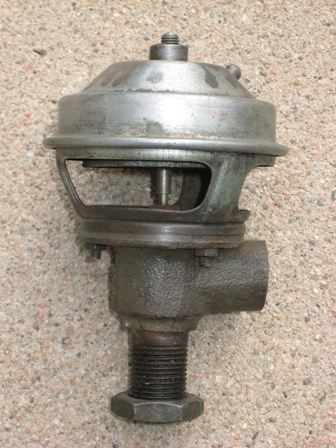

Quoting from Internal Combustion Engine Fundamentals:
"Exhaust gas recycle (EGR) is the principal technique used for control of spark ignition (SI) NOx emissions. A fraction of
the exhaust gases are recycled through a control valve from the exhaust to the engine intake system. The recycled exhaust gas is
usually mixed with the fresh fuel-air mixture just below the throttle valve. EGR acts, at part load, as an additional diluent in
the unburned gas mixture, thereby reducing the peak burned gas temperatures an NO formation rates. ...Substantial reductions in
NO concentrations are achieved with 10 to 25 percent EGR. However, EGR also reduces the combustion rate which makes stable
combustion more difficult to achieve."
From Norman Nocks' Tech Talk:
"This system is fitted to reduce emissions of oxides of nitrogen. The EGR valve is mounted into the exhaust manifold and
controls flow of exhaust gases into the intake manifold. The control signal is taken from a throttle edge tapping which gives no
recirculation at idle speed or full load, but gives a varying amount of recirculation between these two extremes depending on the
vacuum signal and metering profile of the valve, A cut-out valve destroys the vacuum signal to the EGR valve when the choke is
operated."
From the factory maintenance manual:
"The EGR valve, located atop the right side of the cylinder head, has a visible operating rod that connects the valve with
the vacuum chamber. This rod retracts into the vacuum chamber when exhaust gases are being recirculated and moves out of the
vacuum chamber when exhaust gas recirculation is not taking place. You can check the operating of the valve by observing the
movements of the rod. No recirculation should take place at idle or when the choke is in operation. Recirculation should begin
when the engine is accelerated from idle."
The valve should be closed when no vacuum is applied and it should open as the vacuum increases. As a result the following should be noted:
I should note that EGR should decrease fuel consumption. Internal Combustion Engine Fundamentals states "the "improvement in fuel consumption with increasing EGR is due to three factors:
The first two to these are comparable in magnitude and each is about twice as important as the third."